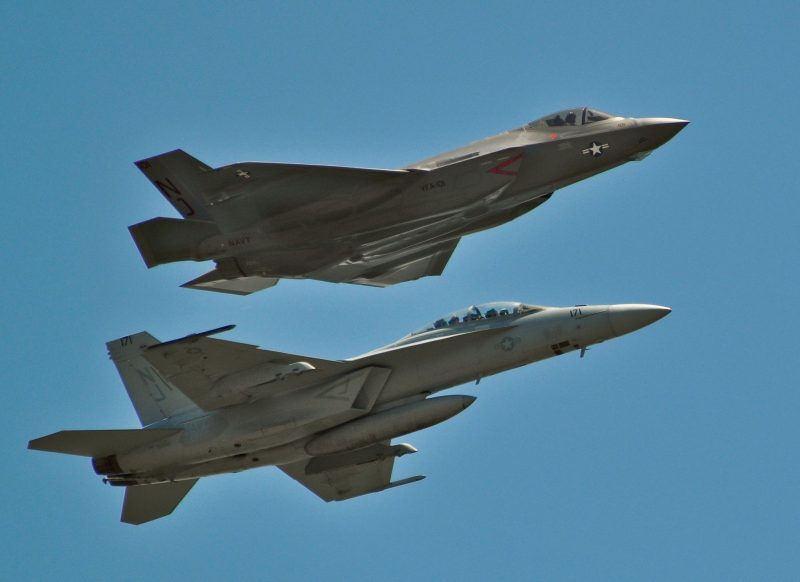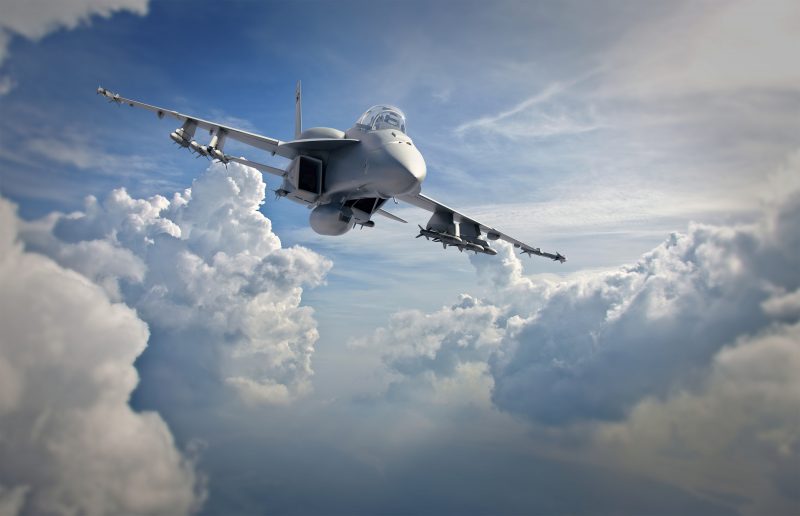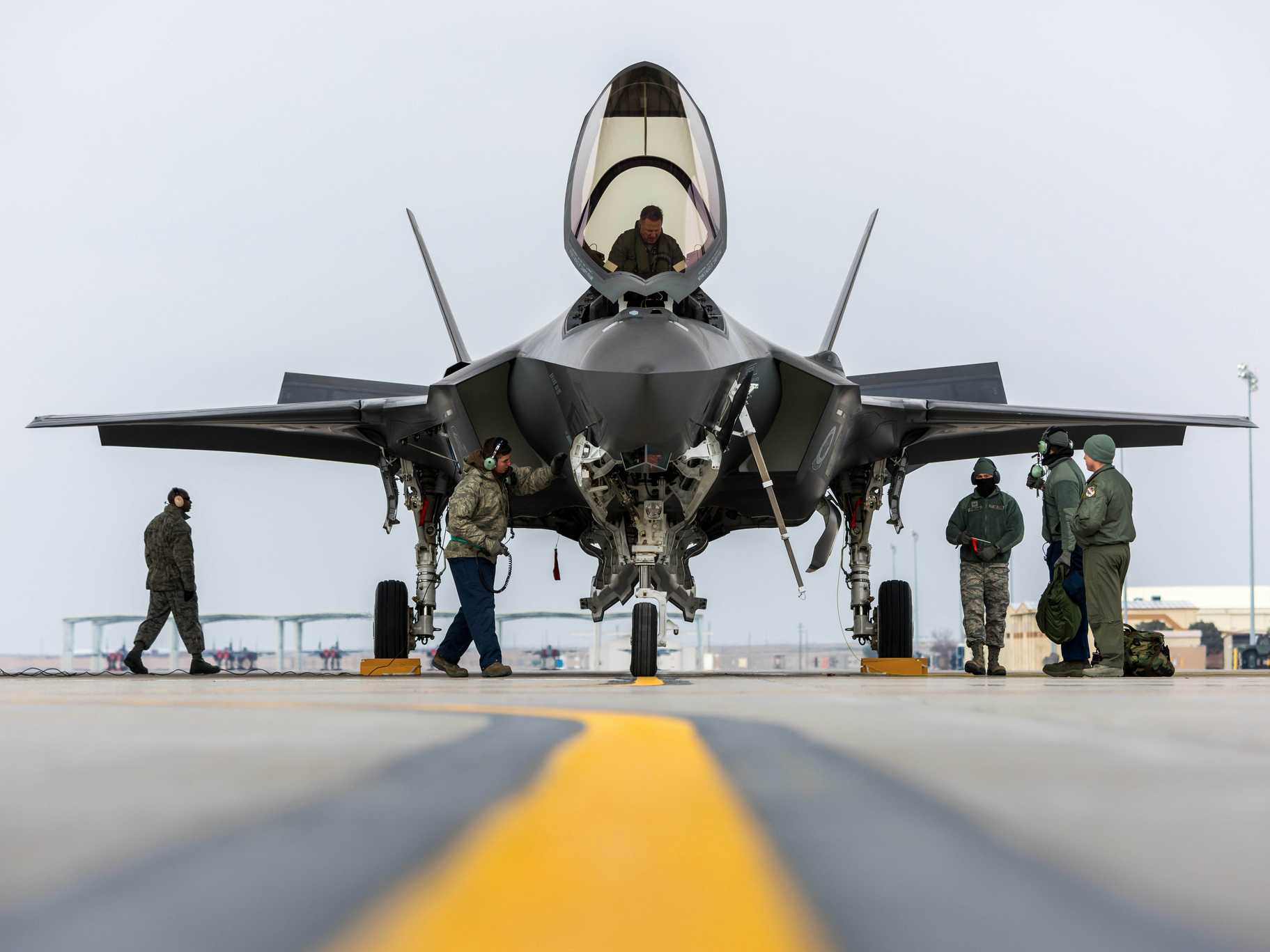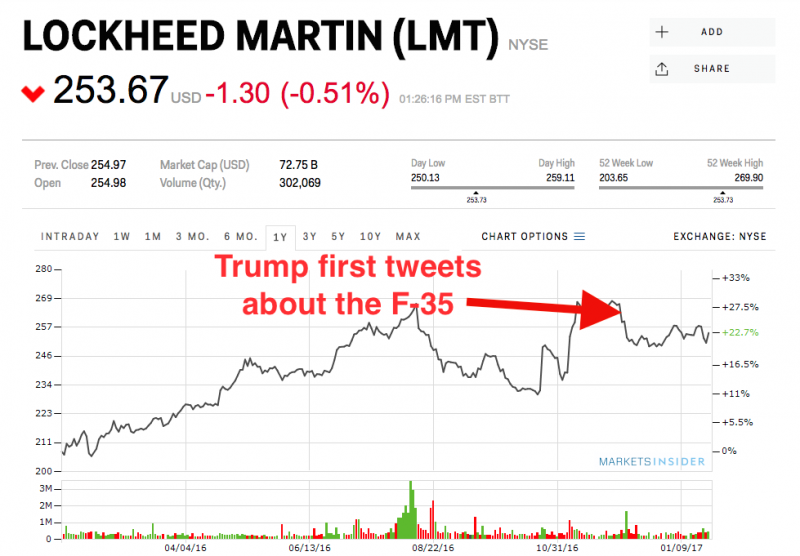On Friday, Secretary of Defense James Mattis called for a review of the F-35 program to “determine opportunities to significantly reduce the cost,” sending Lockheed Martin’s stock down 3% from its preannouncement levels.
Lockheed’s stock managed to hold support at the $250 level, and it has since worked its way back up to about $254 a share, down by about 0.4% on the day.
A release from Mattis said the deputy secretary of defense would “oversee a review that compares the F-35C and F/A-18E/F operational capabilities and assess the extent that F/A-18E/F improvements (an advanced Super Hornet) can be made in order to provide competitive, cost effective, fighter aircraft alternative.”
Lockheed Martin’s F-35 Joint Strike Fighter program, initiated in 2001, has been plagued by cost and schedule overruns as well as perceived deficiencies in the program. As of this year, many experts contacted by Business Insider agree that the jet’s problems are mostly behind it, but some serious problems persist within the program.
Specifically, the F-35C naval variant has struggled to achieve operational capability aboard the US’s aircraft carriers. A recent report indicated that serious issues with the jet’s takeoff process could derail the program until 2019. At about $130 million a plane, the F-35C is the most expensive variant of the three under production.
The F/A-18 has been operational on US aircraft carriers for decades, and Boeing already demonstrated an ability to upgrade the plane on cost and on time in 2001 with the introduction of the Super Hornet.

Dan Gillian, Boeing's vice president of F/A-18 and EA-18 programs, told Business Insider this month that even with the coming F-35C naval variant, the US Navy still planned to field versions of the F/A-18 into the 2040s alongside F-35s. Gillian said advanced updates of the Super Hornet would not cost much more than current Super Hornets at about $70 million.
While an updated Boeing F/A-18 could provide a significant portion of the F-35's avionics and networking capabilities, the F/A-18 simply cannot hope to achieve the all-aspect stealth built into the F-35. When the Defense Department compares the planes, it'll have to evaluate how to prioritize stealth in the threat environment of the future.
The F-35's stealth makes it ideal for operating in heavily contested airspace, such as that defended by Russia or China, but emerging counterstealth technologies threaten the efficacy of the F-35.
Lt. Col. David Berke, a former F-35 squadron commander, told Business Insider that because the F-35 program still ran initial versions of its software, "we don't even know 50-80% of what this airplane can do."

Both the Air Force's F-35A and the Marine Corps' F-35B have achieved initial operational capability, and Lockheed Martin has projected the cost for the Air Force's variant to reach $85 million a plane by the time full production picks up.
Shares of Lockheed Martin have been treading water between $250 and $260 after a December 12 tweet by then-President-elect Donald Trump saying the F-35's costs were "out of control" sent the stock into a tailspin. Its all-time high of $269.90 was put in on December 5.

